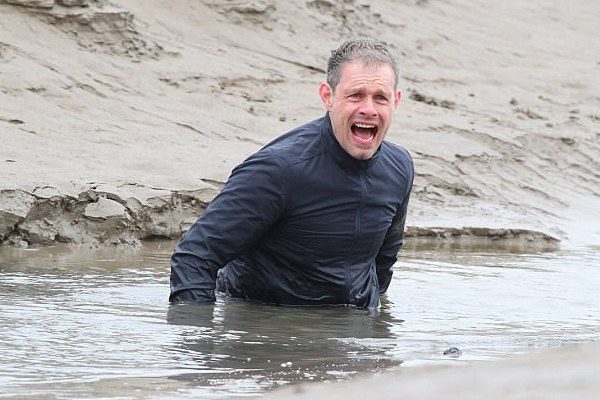General
Part of quicksand’s danger is its resemblance to solid ground. Underneath the firm-looking crust – which can be sand, silt, clay, or other grainy soils – is a slurry of soft, wet, quivering earth nicknamed “jelly mud.” Unlike regular mud, which supports weight, jelly mud collapses easily. The water that saturates the soil often flows underground and isn’t visible on the surface.
Formation
Quicksand requires only soil and water. When the ground is dry, the constant friction between individual sand grains creates a stable, interlocking foundation. But when the ground becomes saturated with water, the water molecules push apart the grains, reducing the intergranular friction and the soil’s normal weight-bearing ability. The soil becomes “quick” when the water pressure supporting the sand equals or surpasses the weight of the sand. This creates a floating suspension with the consistency of wet concrete that will grab your leg – and won’t let it go.
Catalyst
Salt makes quicksand less stable, by reducing the elasticity between sand grains. As a result, people generally sink deeper in ground saturated with saltwater compared to freshwater. The salt eroded from the sandstone canyon walls in southern Utah, creates an ideal environment for quicksand – beware of “dry” river beds in Utah!
Location
Quicksand typically forms along the inside curves of rivers and sand washes, this is where natural springs or runoff saturate an area of soft sediments. Other common spots include marshes, coastlines and riverbanks. Quicksand can be persistent in canyons fed by spring water and can appear rapidly after floods, spring run-off, or during low tide. Post-flood conditions can be particularly dangerous.
Escape
Don’t struggle. Since the human body is approximately half as dense as quicksand, so you won’t sink much below your knees, and on rare occasions up to your waist. Fighting the suction-like pull can be exhausting, especially if you’re hauling a heavy pack. Struggling can cause you to sink deeper by making the solution more fluid.
To escape, stay calm and lean backwards to spread out your weight, and backstroke to firmer ground. Kick your legs slowly to loosen the surrounding sand, and move deliberately toward the edge. Remove your pack if necessary. In areas prone to quicksand, like canyons and marshes, use a stick or trekking pole to probe the surface.





No responses yet